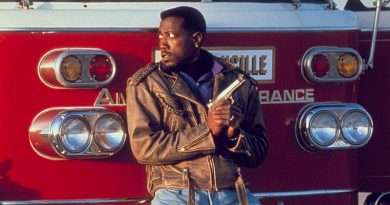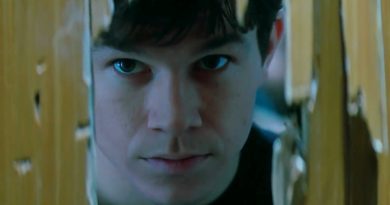Revisiting Zack Snyder’s First Film in Dawn of the Dead (2004)
With Zack Snyder’s highly-anticipated Army of the Dead arriving on Netflix this Friday, I have recently revisited his first film Dawn of the Dead — the 2004 remake of the late George A. Romero’s seminal 1978 zombie epic of the same name.
Looking back at the film for the first time since its initial release back in 2004, I have forgotten how Snyder’s directing styles were both technically and creatively different from what we knew him today. In other words, you will find none of his overly-indulgent visual excesses of slow-motion and speed ramping (his recent director’s cut of Justice League was among them). Although Snyder did utilise slow-motion in Dawn of the Dead, at least he incorporated the effect sparingly.
Formerly a music video director for songs like Morrissey’s “Tomorrow”, Soul Asylum’s “Somebody to Shove” and Rod Stewart’s “Leave Virginia Alone”, Snyder’s directorial debut in Dawn of the Dead remake proved to be a sleeper hit in 2004. Originally released on March 19 that year, it made a killing at US$26.7 million during the first 3-day weekend and subsequently grossed over US$59 million in the US box office alone. Given its modest budget of US$26 million, the film’s worldwide total of US$102.3 million was no doubt an impressive feat for a then-first-time feature director.
Dawn of the Dead was also part of the zombie-movie renaissance that revitalised its genre during the early 2000s, which include other noteworthy films such as 28 Days Later (2002) and Shaun of the Dead (2004). Unlike the slow-moving zombies in the 1978 original, Snyder embraced the then-popular trend of fast-running zombies seen in such genre films at the time.
Whereas Romero’s version pushes the genre boundaries by incorporating social commentary and a satirical take on consumerism, Snyder adopts a more lean and straightforward approach. A remake that is faster in its pace and even gorier by comparison. Not to mention it was around 30 minutes shorter than the original film. The zombie effects, in the meantime, are top-notch using a nifty combination of practical and digital approach. With the help of cinematographer Matthew F. Leonetti, Snyder favours a high-contrast visual aesthetic that gives the film an overall gritty look.
The story — credited to James Gunn (yes, that James Gunn) — doesn’t waste time getting straight to the point, where the film follows a nurse named Ana (Sarah Polley) who survived a zombie attack and stumbled upon some of the survivors (among them includes Ving Rhames’ Kenneth, Jake Weber’s Michael Shaunessy and Mekhi Phifer’s Andre) along the way. Like the 1978 original, they take refuge in an abandoned shopping mall and figured out what to do next.
Snyder does a great job during the first 10 minutes and for me, it was still the best moment in the film — a pre-credits sequence, where Ana first learned the zombie outbreak from her own home before finding ways to make an escape. It was both well-paced and visually propulsive. His take-no-prisoners direction is on point here but as much as I enjoyed watching the Dawn of the Dead remake, the film wobbles a little, particularly during its saggy midsection.
The film is blessed with a better-than-expected ensemble cast as well. This includes Sarah Polley, Ving Rhames, Jake Weber, Mekhi Phifer and Michael Kelly, who plays the mall security C.J.
Snyder even includes some of the actors from the 1978 original in cameo appearances, with one of them includes Tom Savini playing a country sheriff seen from TV footage. Savini, of course, was famously responsible for providing memorable special effects and makeup work for the aforementioned Romero’s zombie classic.
Following the successful directorial debut in Dawn of the Dead, Snyder went on to direct 300, a big-screen adaptation of Frank Miller and Lynn Varley’s comic book series of the same name. From there, his works mainly consisted of — for better or worse — comic-book films (2009’s Watchmen and other DC films).




